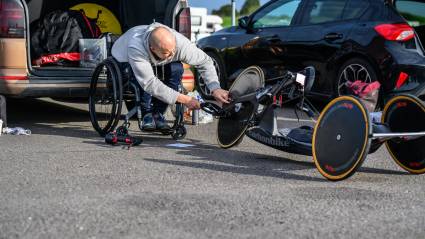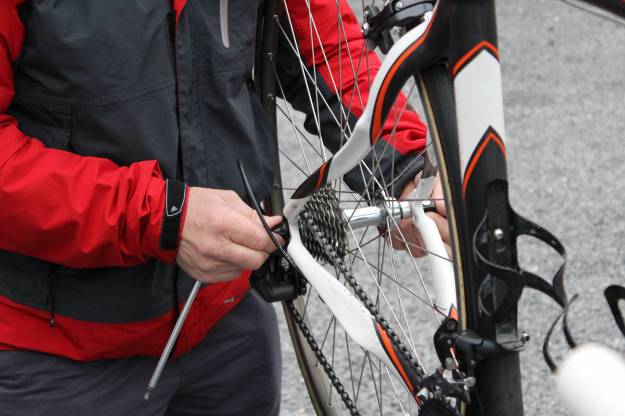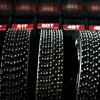Knowledge Level: Intermediate
With the nights drawing in, if you’re still wanting to keep your mileage up, you’re going to need some bike lights. Fortunately modern LED and battery technology has seen the price and weight of lights fall but power and burn time soar. It’s now possible to buy lights that genuinely turn night into day and allow you to ride safely at speed whether on the roads or on the trails.
With many different types on the market, what features should you look for though to ensure you’ve got the optimal lighting setup for the riding you do?
The Law
If you’re riding on public roads in the dark, you’re legally obliged to have lights. However, even with the most powerful or expensive lighting rig, it’s unlikely that you’ll be complying to the strict letter of the Road Vehicle Lighting Regulation (RVLR). The current version was published in 1989 with the most recent amendments made in 2009.
What can be a problem is that the vast majority of lights on the market simply don’t conform to it. Many manufacturers put a disclaimer on the packaging and don’t attempt to produce lights that universally conform. In the UK for example, a front light should have 110 degree visibility, which immediately rules out many high powered products that have shielded or recessed lenses.
At it’s simplest level though, what does the law require? You need a white front light that, since 2005, can be flashing and a rear red light that’s also allowed to flash. However, the RVLR also requires your bike to have a rear reflector and pedal reflectors.
As long as you can be seen and can see, do all the legal intricacies matter? Well, if you’re involved in an accident, yes. Your bike will be examined and, unless it conforms, you could suddenly find yourself blamed for an accident in the eyes of the law. The advice is to follow the law, make yourself as visible as you can, ride safely and do everything else you can to safeguard yourself against accidents.
Lux, lumens, watts and foot candles
Lux, lumens and foot candles are all measures of light intensity that bike manufacturers use to describe how powerful their lights are but unfortunately none of them are used consistently so you often can’t use them to objectively compare lights. To further complicate matters, some manufacturers also rate their lights in watts which refers to the power that goes into them. Lumens are probably the most commonly used measure but even they don’t tell the full story. A light with an incredibly powerful but narrow spot beam could have a very high lumens rating but would be far less suited to cycling than a lower rated light with a broader flood beam. Don’t be seduced by high lumen ratings alone, as beam pattern is far more important. Buy your lights based on recommendation, researched reviews or, if possible, try before you buy.
Beam pattern
As well as a far reaching spot to penetrate into the darkness, light up the road or trail ahead and announce your presence to oncoming traffic, a wide flood is also important. This will light the road or trail just ahead of your front wheel and give essential peripheral lighting. Look for an even beam without distracting rings and halos.
Mounting
Look for tool free mounting or a mount that allows you to easily attach and remove the light. This is important if you’re commuting with lights and have to leave your bike locked in a public or communal area. Check to see that the mount is compatible with your handlebars or, in the case of a rear light, with your seat-post. This especially applies to “aero-bikes” which may have unusually shaped profiled bars and seatposts. The option for a helmet mount is desirable for mountain biking. If the light has a separate battery pack, make sure your bike’s tubing allows it to be firmly secured and that it won’t interfere with your riding.
Recharging
Lights that are rechargeable are definitely preferable and will work out cheaper than constantly replacing batteries. Most rechargeable lights will come with their own charger and an increasing number offer the convenience of using a standard micro USB. With so many different cables in our homes and work, the advantages and convenience of a system that uses a common fitting are obvious. Look for fast recharging, overnight is fine most of the time but you can guarantee there will be occasions when you’ll need your light ready to go with only a couple of hours notice.
Burn time
Think about the length of ride you’ll typically be doing and look for a light that offers a burn time on maximum power that’s at least 30 minutes longer. Manufacturers’ claims do tend to be fairly realistic but this buffer should cover any exaggerations and will give you some margin for error if you have a puncture, get lost or are out for longer than expected for any other reason.
Controls and setting
Most lights allow you to toggle between a number of settings. This means that, by adjusting your light to the conditions and your speed, you can increase its burn time. For example, when riding through well lit areas on the road or when climbing off-road, you wouldn’t need as much light as when riding hard on an unlit country lane or descending a technically challenging trail.
A wide range of settings allows you to fine tune your lights output but make sure the step-up and step-down sequence is intuitive. For limp homes on the road when your light is running low on power, a flashing setting is essential. Look for large, positive and easy to operate buttons, remembering that you could be having to use them in thick gloves. On many lights, the control button also doubles as a charge indicator. Check to see what warnings it gives for low battery levels and how much burn time at what power each warning represents.
Additional considerations on the road
On top of those required to meet the minimum legal obligations for riding on the road at night, we’d almost go as far to say that you can’t have too many additional lights. Facing the rear, small flashing red lights clipped onto your helmet or your jacket can significantly increase your visibility and give you back-ups if your main rear light fails. You can even get lights to replace your bar-end plugs. Check to see that your front light is visible from the side and, if not, have an additional compact light that is. High powered lights can easily dazzle oncoming traffic, so make sure they’re not directed into drivers’ eyes or dim them.
Additional considerations for mountain biking
The ideal setup for mountain biking at night requires two front lights. One on your bars and one on your helmet. The reason for this is that, when mountain biking, your head is often turned in a different direction to the bars to anticipate a turn and you need to be able to see where you’re looking. For the helmet mounted light, a remote battery pack that you can stow in your backpack cuts down on the weight on your head. Also, in cold conditions, having the battery pack insulated in a pack and close to your body will help keep it warm and extend burn time. Finally don’t forget, if you’ve got any road sections on your ride or are planning to ride to and from the trailhead, to have a rear facing red light on your bike or clipped to your backpack.
















